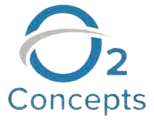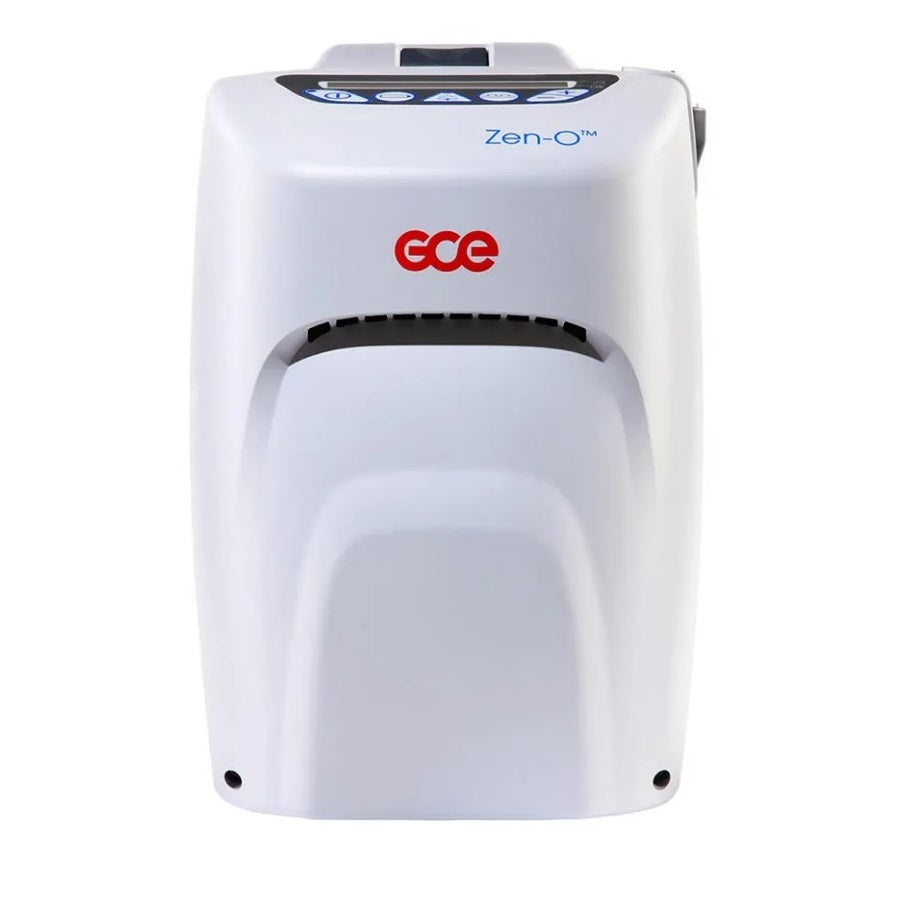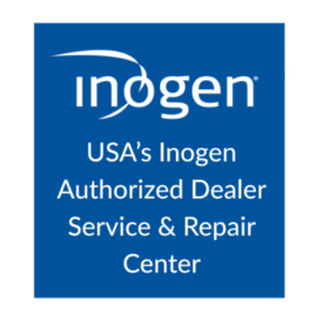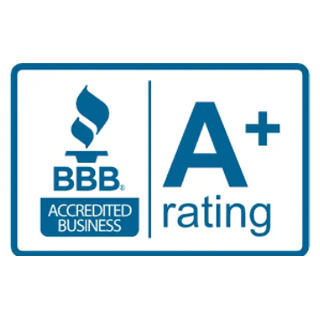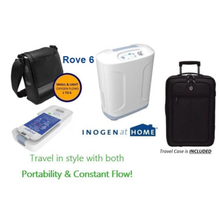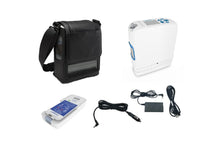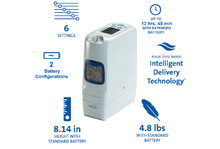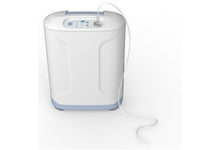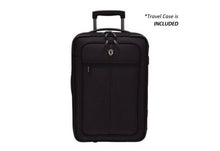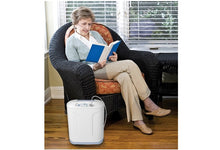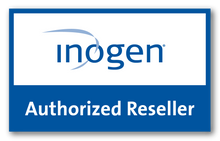Portable Oxygen Concentrators with Humidifiers
If a patient is experiencing nosebleeds, a sense of dryness, or irritation when using a portable oxygen concentrator, it most likely means the user is not receiving enough moisture from the air it delivers. While this isn’t a problem for everyone, patients don’t need to suffer from these issues since multiple portable oxygen concentrators support humidifiers. These add moisture to the oxygen output, so that the delivered air is more comfortable to breathe.
Colección: Concentradores de oxígeno portátiles con humidificadores
-
Concentrador de oxígeno portátil O2 Concepts Oxlife Liberty
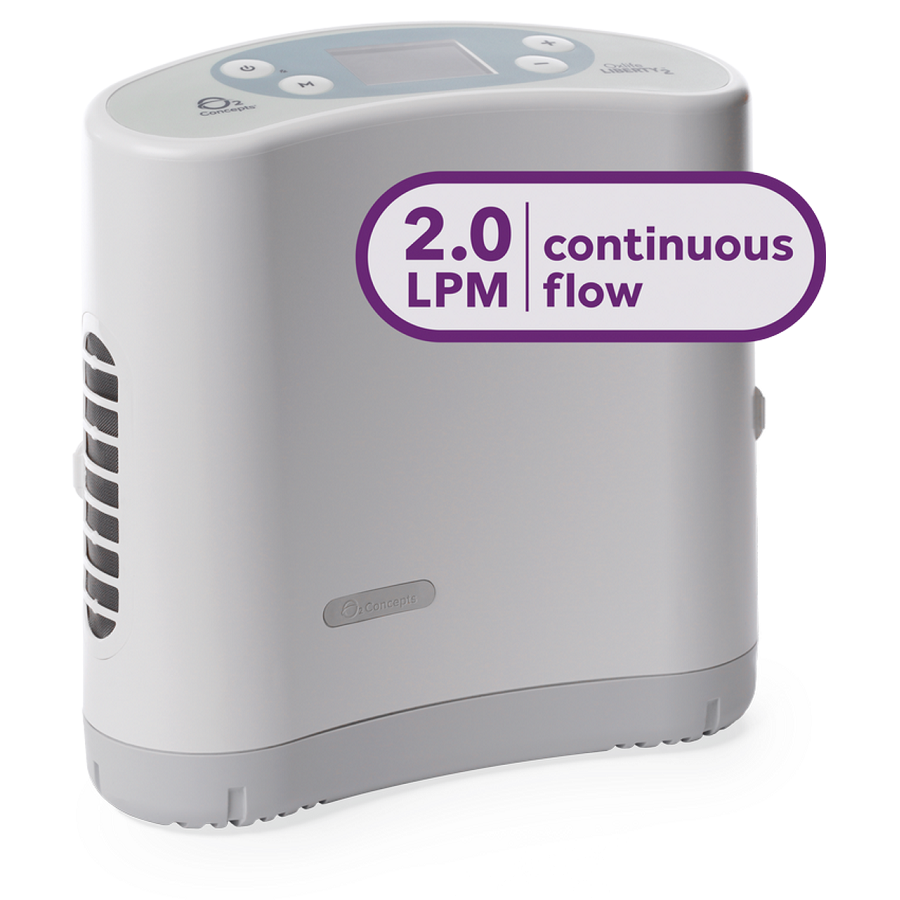
Concentrador de oxígeno portátil O2 Concepts Oxlife Liberty
-
-
Concentrador de oxígeno portátil O2 Concepts OxLife Independence
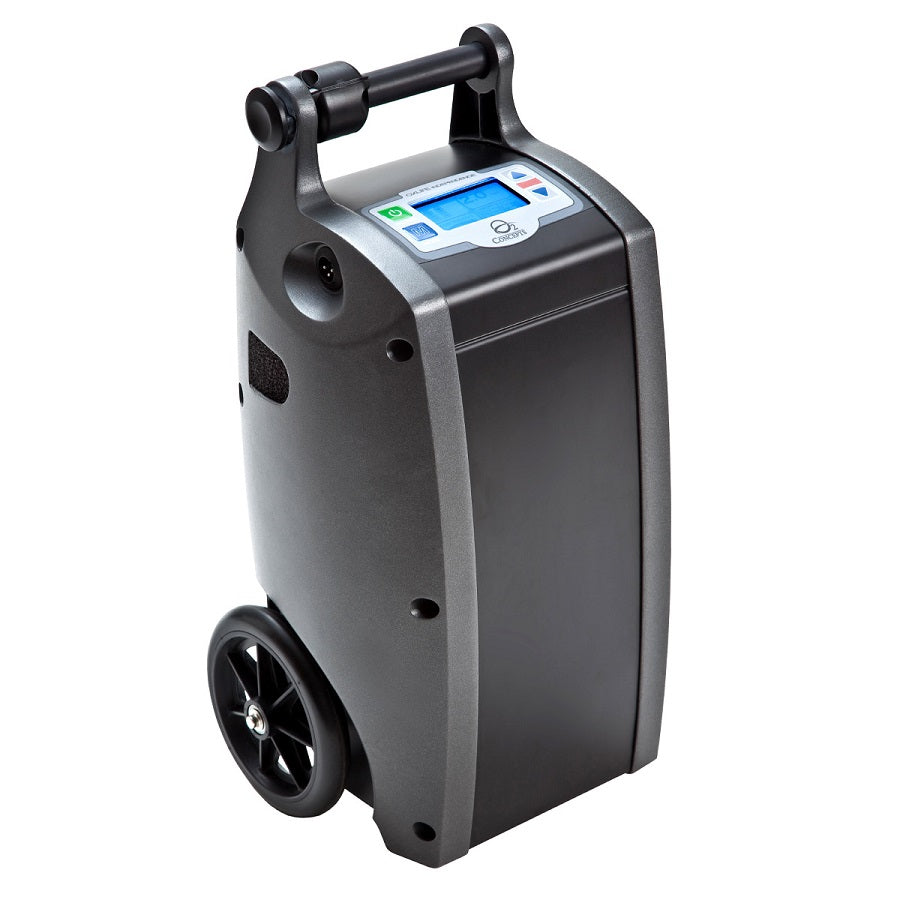
Concentrador de oxígeno portátil O2 Concepts OxLife Independence
-
CAIRE SeQual Eclipse 5 - Portable Oxygen Concentrator
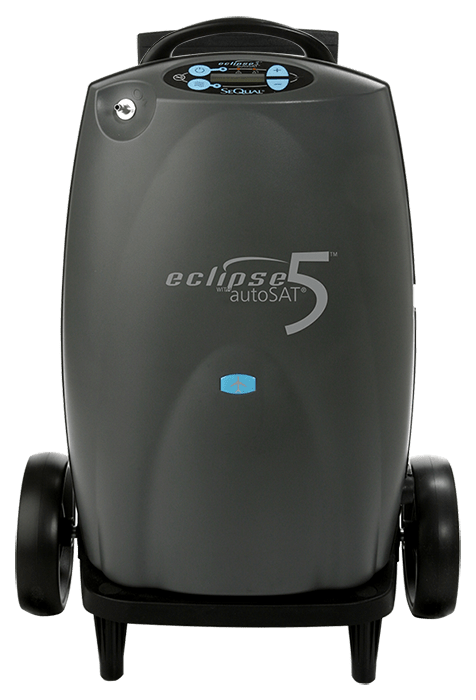
CAIRE SeQual Eclipse 5 - Portable Oxygen Concentrator
Symptoms of Air That Is Too Dry
● The patient has dry or cracked lips
● The patient is experiencing a bloody nose or has blood in their airways
● The patient has been having a sore throat
● The portable oxygen concentrator is causing coughing fits
● Respiratory symptoms are becoming worse
How a Portable Oxygen Concentrator With a Humidifier Works
Portable oxygen concentrators with humidifier attachments work by adding moisture from distilled water to the oxygen flow. This is because pure oxygen is very low in moisture and often has a drying effect on patient airways. When oxygen passes through water, the oxygen absorbs water vapor, which is the process of humidification. With a portable oxygen concentrator, distilled water is added to a humidifier that incorporates into the oxygen flow, which is then delivered to the patient via the cannula or oxygen mask.
Why Pulse Dose-Only Models Aren’t Compatible with Humidifier Bottles
While each of the products in this collection supports pulse flow modes, it’s only in continuous or constant flows that a patient will be able to use a humidifier bottle. In fact, this is the reason why pulse dose–only models don’t typically have support for humidification. With these kinds of devices, the focus is on higher portability, which is why pulse models tend to be lighter and have longer battery lives.
Because pulse dose delivery responds to the patient’s breathing rate, it doesn’t push air with enough pressure through a humidifier bottle the way continuous flow models do. Since oxygen delivery is on-demand and intermittent, there’s not enough time or pressure for the machine to add moisture to the oxygen stream.
Pros and Cons of a Portable Oxygen Concentrator With a Humidifier
| Pros | Cons |
|---|---|
|
● Adding moisture reduces airway dryness ● Humidified oxygen helps loosen mucus for easier clearance ● Reduces discomfort at higher flows (above 3 LPM) ● Improves patient comfort in dry climates ● Easy to attach to compatible portable concentrators ● Most models allow the patient to adjust the moisture level ● Useful for conditions like COPD and bronchiectasis ● Some doctors prescribe humidification for portable use |
● Humidifier bottle adds weight to a device designed to be portable ● Not all portable oxygen concentrators support humidifiers ● Battery life decreases when pushing oxygen through water ● Humidifier bottles must be cleaned thoroughly and only use distilled water |
How to Use a Humidifier Bottle With a Portable Oxygen Concentrator
Putting Water in the Humidifier Bottle
1. Remove the cap, which typically screws off the bottle.
2. Fill the container with distilled water up to the max line.
3. Tightly reattach the cap—ensure it’s screwed on properly to avoid leaks.
Attaching the Bottle to a Portable Oxygen Concentrator
1. Place your concentrator on a stable, flat surface. If it has wheels (e.g., the CAIRE SeQual Eclipse 5), lock them before proceeding.
2. Locate the oxygen outlet port on the concentrator (usually on the front). Connect one end of the humidifier tubing to this port and secure it firmly.
3. Place the filled humidifier bottle into its holder on the unit. Ensure the bottle sits level and cannot tip.
4. Attach the other end of the tubing to the bottle’s adapter; push the tubing into the adapter and twist the wingnut clockwise to tighten.
5. Finally, connect the cannula tubing to the humidifier bottle outlet, pushing it in until it’s snug.
What to Consider for a Portable Oxygen Concentrator with a Humidifier
| Factor | Why It’s Important |
|---|---|
| Additional Flow Settings |
● Extends run time when constant flow isn’t needed ● Pulse flow delivers oxygen only on inhalation ● Allows adaptability for different activity levels Note: These pulse-flow settings cannot be used concurrently with a humidifier bottle, as the device cannot push oxygen through water adequately while on demand. |
| If it’s Approved for Air Travel |
● FAA approval ensures safety in pressurized cabins ● Unapproved units can interfere with aircraft instrumentation ● FAA–approved units eliminate need to rent onboard oxygen |
| Battery Life Expectancy |
● Longer battery life means more freedom to move ● Users can avoid constant recharging or AC/DC dependence Important note: Continuous flow units consume more power; some models offer hot-swappable batteries so you can swap in a fresh battery without interrupting therapy. |
| Charging/Plug-In Method |
● AC chargers plug into standard wall outlets for rapid charging ● DC (12 V) adapters enable vehicle charging via cigarette lighter ● External charging docks let you charge extra batteries while using the device |
| Sound Levels |
Having lower sound levels makes the device more convenient when: ● Sleeping ● In quiet environments ● Watching TV |
| Methods of Carrying a Portable Oxygen Concentrator |
Most portable oxygen concentrators are designed with mobility in mind: ● Lightweight pulse-flow models often include a shoulder strap or backpack option for hands-free use. ● Heavier continuous-flow units typically come with a rolling cart or built-in wheels, allowing you to pull them like a small suitcase. |
Quick Reference Guide
Find the Best Portable Oxygen Concentrator for Your Needs
Choosing the right portable oxygen concentrator can be a daunting task, but we're here to make it simple. Our quick reference guide highlights the key benefits of each model, helping you easily determine which one best fits your lifestyle and oxygen therapy requirements.
Highest Quality: Inogen One Rove 6
The Inogen One Rove 6 is the latest innovation in portable oxygen concentrators. It boasts an 8-year expected service life and Inogen’s reliable pulse flow technology, plus an intuitive control panel that matches oxygen delivery to breathing patterns.
Best Value: CAIRE FreeStyle Comfort
The CAIRE FreeStyle Comfort is a lightweight, easy-to-carry pulse-dose concentrator that uses AutoSAT® technology to match each bolus to your breathing. It offers up to 8 hours runtime on the standard battery and up to 16 hours with the extended option.
Lightweight: Inogen One Rove 4
The Inogen One Rove 4 weighs just 2.8 pounds and delivers pulse dose oxygen on settings 1-4. With a standard battery, it lasts up to 2.5 hours, and extended batteries are available for longer trips. Its compact design is perfect for shoulder or backpack carry.
Budget: Inogen One ReCertified
Our Inogen One ReCertified products start at just $1,295. These certified pre-owned units come with a two-year warranty and all the same features as new models. Choose from the G4, G5, or the Rove 6 for a budget-friendly option.
Speak To One Of Our Oxygen Specialists!
 1-800-775-0942
1-800-775-0942

“This has been the best online buying experience I have ever done, unlike other places when I was shopping and reading reviews Main Clinic Supply answered the phone right away every time, my package said overnight before 10:30 AM, it was here 10.15 AM the next day! Can’t say enough good thing, they realize you need your oxygen now they get it to you fast!”
Get our Ultimate Freedom Package!
Save big with our freedom package and get the Inogen One Rove 6—the latest in portable oxygen technology—along with the Inogen At-Home Oxygen Concentrator, plus a free travel case.
Shop Now



